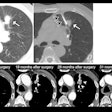Part II Landing Pages:
7 Deadly Sins of Landing Page Design
In the last article, we talked about 3 reasons why you should be using landing pages. Here are seven common mistakes people make when building landing pages that will reduce performance and conversion rates.
- Creative disconnect
The graphics and or visual concept that you create in your initial ad or e-mail broadcast should be clearly carried over to your landing page. People need to know that there is continuity from the ad and that they have “landed” in the right place. Your landing page should be tailored to match your ad or e-mail broadcast.
- No call to action
When people arrive at your landing page you should have a clear course of action that you want them to take. Whatever it is, you should be upfront about that and ask the person to do it. It’s like the old sales adage, “you have to ask for the sale”. It sounds trite but give the reader a big button to click on. That focuses their attention and their intent.
- Call to action is not “above the fold”
The concept of “above the fold” is getting trickier to define with the myriad of mobile devices, tablets and traditional PCs but the point is this: Put your call to action very close to the top of the page. Don’t make the reader have to scroll to find it. You’ve got maybe 5 seconds to get the reader’s attention so make the most of that time.
- No incentive to act
A call to action means that you want someone to do something. Often this means collecting contact information for future follow up. That means you need to ask a harder question: “What’s in it for them?” It’s imperative that you provide people with an incentive to take the action you want. Your lead collection efforts will not perform as well as they could unless there is clearly perceived benefit to the reader.
If you doubt this ask yourself when was the last time you filled out a form and asked someone to contact you? Now ask yourself why did you do it? I'll bet that you did it because you saw that there was a clear personal benefit to you for doing so.
The incentive does not have to be expensive. In fact, one of the best examples I've ever seen was as a glossary of terms related to the radiology industry that people could download to make sense of all of the acronyms. It was free and it generated a huge response. Think about trying to provide meaningful, educational content that makes a person’s job easier or that would help them in some specific way. If you do that people will respond.
- Your lead collection form is too long
If you have a lead collection form on your landing page remember this: the longer it is the fewer people will fill it out. Additionally, keep in mind that if the form looks long people won’t fill it out. Keep it short – if a field is not required don’t even show it. Ask only for the data you absolutely need. When you’re done, look at your form and ask yourself, “Would I feel that out?” If you have even a hint of doubt go back and shorten it.
- Too many distractions
Your landing page should be designed to get people to see, learn or do one thing that is important to you. Stay focused on that goal. Anything that distracts from it should be removed. That includes removing navigation bars and other links, offers or products that are not related to your call to action. This is one more reason NOT to use your standard corporate site template for a landing page.
- Keep it short
Assume you have 3-5 seconds to get the reader’s attention. Create a good headline and then get to your point. Be clear and concise about the benefits to the reader for taking action. The majority of people will make their decision off what they can see and understand in those first 5 seconds. If you want to include additional information that’s ok but do it lower down on the page (below the fold) and let those who are interested browse it.
















